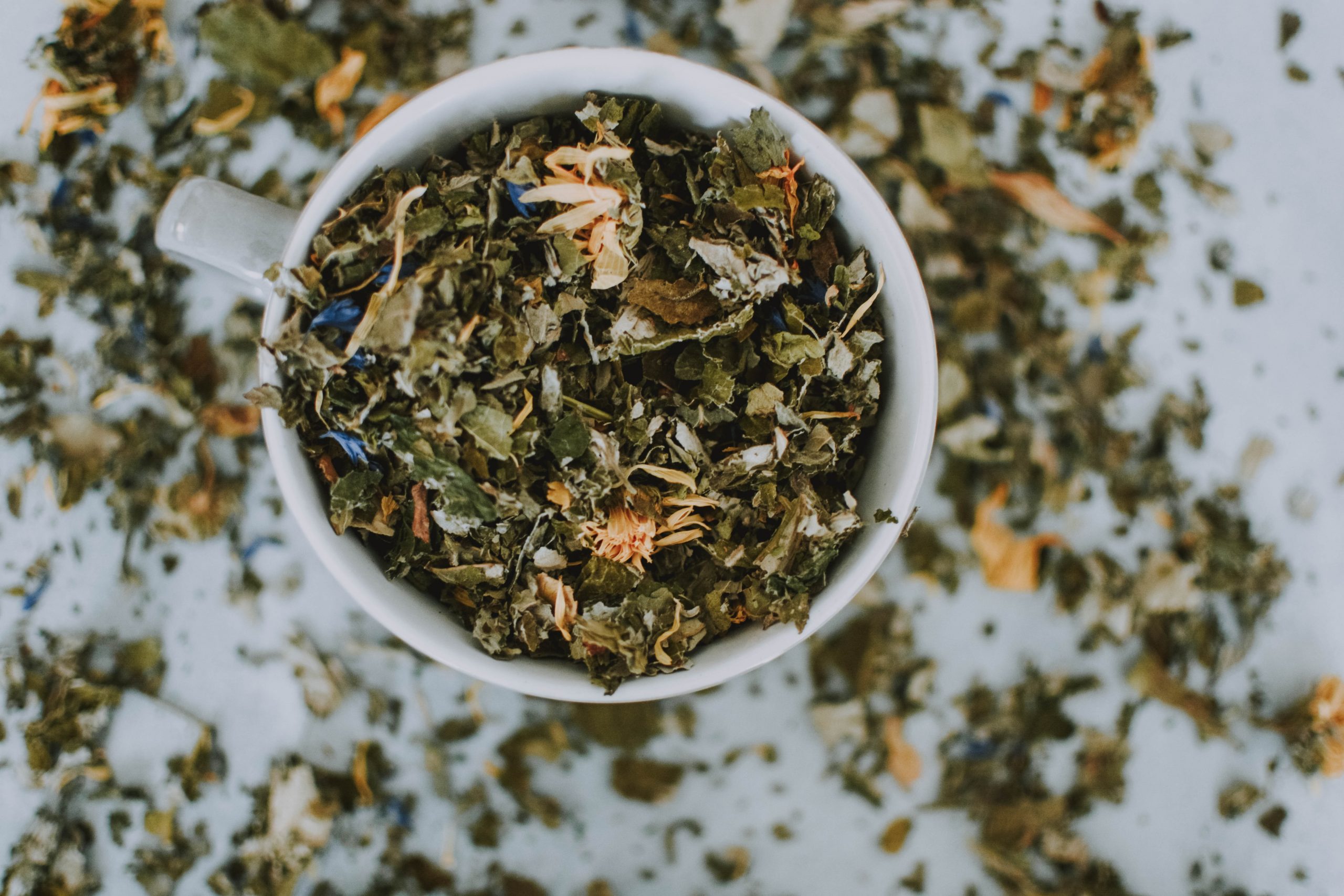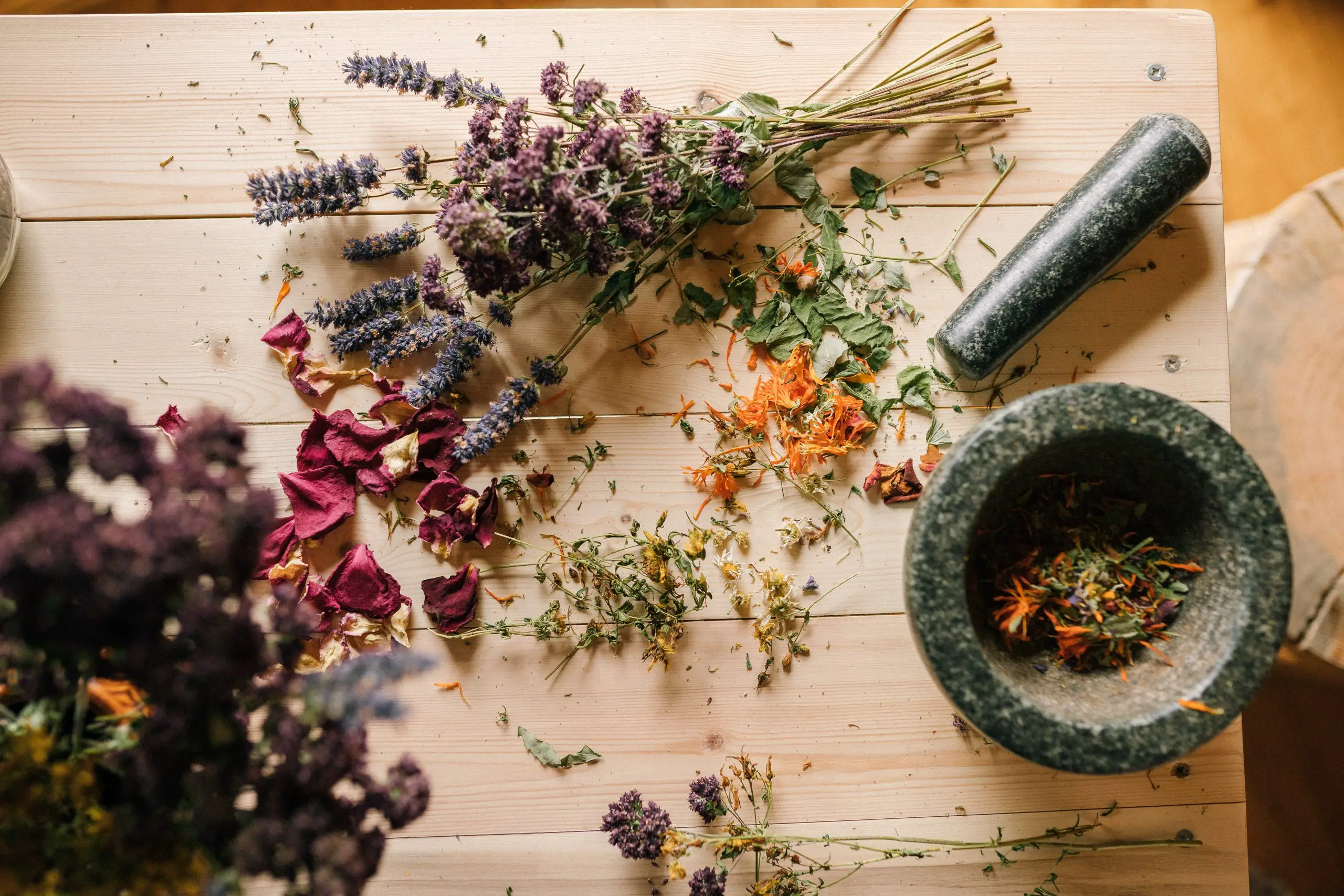Whether a beginner or an experienced grower, you will always need a good understanding of drying fresh herbs. With these tips and guidelines, you can dry your fresh herbs.
Herbs have numerous advantages, whether used in tea, cooking, or medicinal. To preserve and concentrate the flavors and nutrients in herbs so that you can benefit from them for years, drying is a fantastic approach to prevent the herbs from going bad.
This article will guide you on how to dry fresh herbs, what additional methods are available for drying herbs at home, which herbs are suitable for drying, and how to dry your herbs. What benefits do you get, how can they help you, and how do you store-dried herbs? So let’s start!

How to Dry Fresh Herbs?
Herbs are traditionally dried by being hung upside-down in a dry environment., a dark place like a cellar, attic, or closet, and letting nature do its thing. Although this approach has great potential, there are others. Here are four additional fantastic methods for preserving those fresh herbs.
Method1: Air Drying
The simplest and oldest method for drying herbs is through air drying: Herbs should be gathered in tiny groups and tied together at the tips of the stems. Anything can be used, including rubber bands or thread.
Moisture promotes mold growth and slows down the drying process for your herb bundles. Since the stems may shrink as they dry and get slack, it is frequently helpful to use something quickly tightened, like a twist tie. After you’ve knotted your herbs, hang them upside down in a warm, dry location.
Herbs, like other plants, draw pests. Loosely weave mesh around each bundle of herbs to protect them. The mesh catches falling leaves and prevents dust and insects from contaminating your herbs. The finest bags are made of muslin or mesh, but if you don’t have any of those on hand, a paper bag with a few holes punched in it will do.
Plastic bags should not be used since they encourage mold. When the leaves crackle when touched, they are sufficiently dry. Depending on your environment and the particular herbs, it can take eight hours to a week for fresh herbs to dry completely.
Method 2: Drying Herbs with a Dehydrator
A home dehydrator works well for drying herbs in large quantities, especially if it has mesh inserts that prevent leaves from dropping out. The leaves should be placed on each tray in a single layer after being checked for cleanliness and breakage.
Cook for about two to four hours on the lowest setting. The most challenging step is taking the herbs out of the trays. The broken pieces can be kept and stored if you do this over a clean cloth or basin.
Method 3: Drying Herbs in an Oven
It is also possible to use your standard oven. To prevent the leaves from sticking to a baking pan, it is advisable to buy some muslin or cheesecloth to spread them out on.
Additionally effective are silicone mats. The machine should be set to the lowest and “bake” for around 30 minutes. When the leaves fall off easily and resist pulling when you attempt to tear them, they are dried.
Method 4: Drying Herbs in the Microwave
Yes, you can quickly and easily dry herbs in a microwave. The sections you want to save should be washed after separating the leaves from the stems—Microwave the greens for one minute between two paper towels after they are no longer damp. Check, and if necessary, continue zapping for another 30 seconds to finish the job.
A review of 200 herb samples’ microbiological quality was conducted. The effects of drying technique, type of container, and storage conditions were identified for dill, basil, marjoram, and wild marjoram. The total aerobic count per gram of dry material varied from 104 to 107. Most samples contained molds, and aerobic spore formers, particularly Bacillus cereus; fecal indicator organisms were infrequently observed.
Reference: Packaging and Storage Effects on Microbiological Quality of Dried Herbs.
A review of 200 herb samples’ microbiological quality was conducted. For dill, basil, marjoram, and wild marjoram, the effects of drying technique, type of container, and storage conditions were identified. The total aerobic count per gram of dry material varied from 104 to 107. Most samples contained molds, and aerobic sporeformers, particularly Bacillus cereus; fecal indicator organisms were infrequently observed. The drying process had an impact on the population of the majority of vegetative microorganisms. Microbes fared better under air drying than under freeze drying. Microbial content was impacted by packaging. When the herbs were contained in packaging that contained oxygen, the harmful effects of storage time were most visibly demonstrated.
Are there any Additional Ways to Dry Herbs at Home?
Some individuals have had wonderful success cooking herbs in the microwave among two sheets of paper towels for 2-3 minutes at a time, then for brief 15-second intervals until crumbly. Although I’ve always preferred the flavor of microwaved herbs, this approach is undoubtedly quicker, and you might succeed where I failed. Some people, who have the room, fervently recommend food dehydrators.
Personal preference dictates that most people like to hang herbs to dry from accessible locations. Still, if you have a large herb garden, you should experiment with a few techniques to determine the most effective. Remember that these fresh, dried herbs will be much more intense than those from the grocery store, so play around until you find the right amount of flavor.
Which is Better, Drying or Freezing Herbs?
Dehydration is not a good option for preserving herbs with greater moisture content, such as mint, parsley, or chives, since drying doesn’t always retain the flavor we want. Herbs can be quickly and easily frozen while retaining a lot of fresh herbs’ flavor, aroma, and nutrients.
What Herbs are Dryable?
Now that you’re ready to dry your herbs, it’s a good idea to consider which herbs are readily available and which dry the fastest. It’s a good idea to conduct some study before using a herb because each has unique characteristics, such as water content, essential oil levels, and propensity to mold.
Since they have bigger, more substantial leaves and don’t need much upkeep before the method, some, like basil, sage, cilantro, and rosemary, are straightforward. Others, like dill, tarragon, and thyme, require extra caution while separating the smaller leaves from the larger stems. The good news is that you can dry whatever herb you like.
Label each batch at the end because stacks of dried green leaves can start to resemble one another. Although many believe that dried herbs lose some flavors, the dried variety usually packs more punch per ounce. Since fresh tastes greener, it has a slightly different flavor. However, this does not imply that dried herbs should be disregarded.
What Benefits do you Get from Drying your Herbs?
Several advantages of drying your herbs are listed below:
1. Fresher herbs can be dried at home: Herbs dried just a few months ago taste considerably better than herbs dried two years ago since dried herbs lose flavor as they age. Dry herbs you purchase from the grocery store have already undergone processing and transportation, not to mention the time spent on the shelf and in your cupboard. Home cooks may access the flavorful plants all year by preserving fresh herbs. On the other hand, you’ll have fresher dried herbs with the finest flavor if you dry your herbs after the growing season.
2. Herbs are grown at home during the off-season: It might be challenging to have homegrown herbs unless you move your herbs indoors for the winter, as experienced herb gardeners know. When your plants have gone dormant, drying your herbs is a fantastic method to continue enjoying your garden’s produce.
3. Pesticides are under your control: You don’t know what pesticides or chemicals the farmers use when growing the herbs you buy at the shop. You have complete control over the types of pesticides you use (or don’t use) when you produce your herbs for drying.
4. Dry herbs purchased in stores are costly: The price of spices can frequently break a supermarket’s budget. Growing, utilizing, and drying your herbs can be more affordable in the long run, even though the initial setup of a herb garden can be rather expensive.
How do you Store Dried Herbs?
This is the greatest method of preserving home-dried herbs, much like if you purchased them in a glass bottle at the supermarket. You can either acquire an airtight plastic container or store old bottles or jelly jars (all cleaned well, of course). Although it may not seem as attractive, the latter functions just as well.
Choose whether to crumble the leaf up for storage or to save it whole. Crushing the leaves is the simplest method when preparing various ingredients, like mint or basil. You get a little more scent when you crush the leaves as needed if you keep them whole, which is a bonus.
Your dried herbs should be kept in sealed containers. The little canning jars are perfect. Plastic bags with zippers also function. If you store your herbs’ leaves whole and crush them when you’re ready to use them, their flavor will last longer. Containers should be kept cool and dry and out of direct sunshine. Sunlight-blocking canning jars in an amber tint are an option.
Tips for the Use of Dried Herbs
- Once the drying and storing processes are finished, you can use your herbs.
- Remove a stem from the herb and scatter the leaves into the saucepan to utilize them in cooking. By tracing your palm down the stem, you ought to be able to dislodge the leaves.
- Replace one tablespoon of fresh herbs with approximately one teaspoon of crumbled dried leaves.
- Using dried herbs before a year has passed is ideal. Your herbs’ flavor likewise diminishes as they darken.
Conclusion
It’s preferable to utilize fresh herbs from your garden, but there will always be more than you can consume in a single season. The closest substitute for fresh herbs is dried herbs from your garden.
The simplest and least expensive method for drying fresh herbs is air drying, and this method can also help preserve the flavor of the herbs by preserving their essential oils. Whether you want to preserve herbs for long-term food storage or to add flavor to your cooking, drying herbs is an easy way to preserve them.
A great method for drying herbs is to hang them upside down. It is also recommended to store the herbs in a dark cupboard, preferably in an airtight container. For more delicate herbs, you can use a paper bag. This will allow you to remove the herb’s excess moisture and help you dry them more thoroughly.

